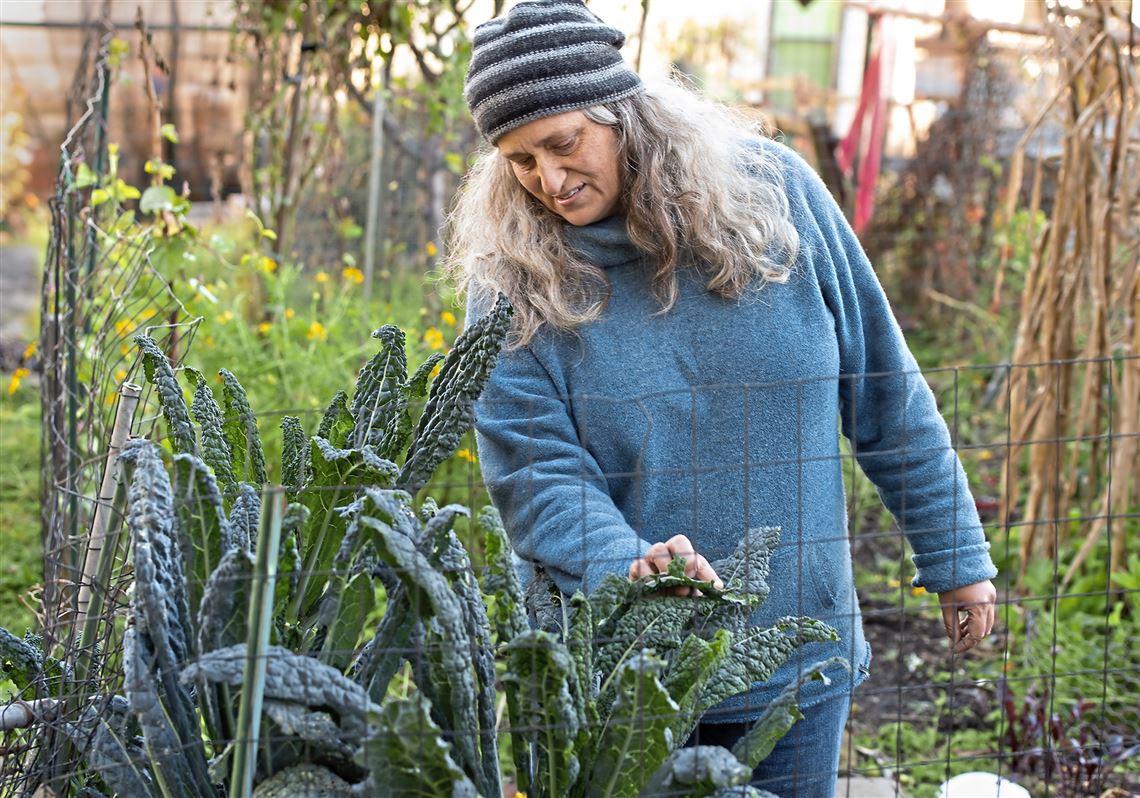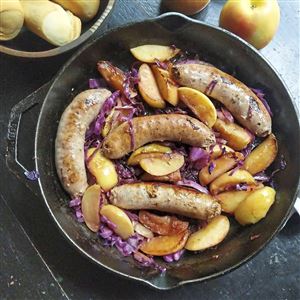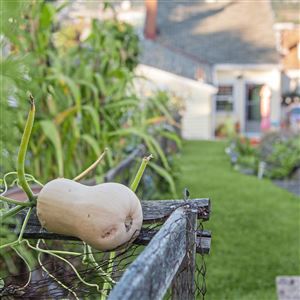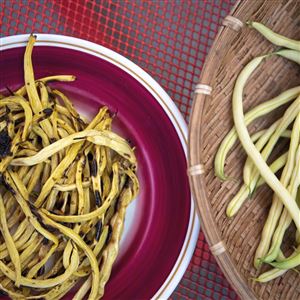As fall stretches into November and the idea of winter descends, the reality of Pittsburgh Gray hits the sky and we all start to hunker down.
I’ve harvested the bright orange pumpkins and made indoor bouquets of the colorful zinnias. The tomatoes have finally given up, and I’ve chopped down the pole beans. My once out-of-control garden browns and dwindles.
Some plants just don’t let go easily, though. Kale is one, a trouper through and through. In fact, this relative of the cabbage actually gets tastier after the first frost. As temps drop, kale converts its starch into sugar to keep from freezing, like putting on a sweet winter jacket.
That’s right, kale is that person defiantly firing up the Weber grill, wearing a parka and tossle cap in the snow, refusing to let go of summer.
Kale has become hip over the last decade, which is kind of funny because it’s the vegetable most likely to wear practical shoes. It’s sturdy and tasty and easy to cook. Sure, massaged kale salad sounds sexy and 4 million results show up when I Google kale smoothies. But sometimes hipsters get it right. Kale is good. And easy to grow. And it will make you healthier while feeling like a garden champ in November.
I clear out the vegetable beds this time of year because it’s time and also because I need to make room for the garlic, which I try to plant by the end of October. It will snooze under a layer of straw, peek up in spring and continue to grow until it’s harvested mid-summer. This leaves the kale, my climbing spinach, the walking onions, nasturtiums, some late-planted baby bok choy and carrots.
I’ve never grown kale as big and beautiful as this year’s crop. I tried an assortment of seeds from Kitchen Garden in Bantam, Conn., called The Rainbow Kale Mixture, which included ‘Tuscano,’ ‘Winter Red’ and ‘Winterbor’ among others. Some plants have leaves that are flat and scalloped, while others sport frilly edges. The color ranges from light green to pink to the deep green dinosaur skin of ‘Tuscano’ leaves.
This year some of the stems are 3 feet long. It’s really a lot of kale. But a lot of kale is nothing like, say, a lot of tomatoes. It cooks down to a little nutritious pile of greens in no time, while I still have bags and bags of San Marzanos packed into my freezer, waiting to be made into sauce.
Just zip the leaves from the kale’s stem, chop them up and add to soups, omelets, sautes and stir-fries. Or, yes, massage the leaves with a little olive oil and salt to make a nice, bright green salad. Unlike arugula or escarole, kale has a sweet, earthy edge, and it retains its structure in soups and stews.
My favorite use for kale and my own personal harbinger of winter is a big bowl of greens and beans. I don’t know if it comes from my many Italian-American friends growing up in Beaver Falls, or from that time my parents’ friends Kay and Tony Mannarino babysat me as an infant and swore to teach me Italian before my parents returned.
Maybe there’s some hidden Italian ancestry in my DNA, but this traditional southern Italian dish hits every single taste note for me, every single time. It easily converts to breakfast with a fried egg on top, or shifts to lunch or dinner with a crusty sourdough or cornbread side. Some people use escarole, others spinach, but kale is my go-to green.
Greens and beans can be a soup served in a bowl with potatoes added, or a saute served with rice. You can add chopped carrots or throw in some late-season tomatoes. It’s surprisingly flexible and accepting for being such a trendsetter.
If you don’t have a ton of kale in your garden to use up and don’t want to make your own greens and beans, I highly recommend ordering from the counter at Colangelo’s in the Strip District. Get an almond mele for dessert while you’re at it. You will not be disappointed.
Sherrie Flick: sflick@hotmail.com.
____________
Simple Greens and Beans
PG tested
No dish is more iconic in Pittsburgh than greens and beans. Also, no two recipes are the same.
Kale is the star of this easy recipe along with thin-skinned Italian cannellini beans — I used Marcella beans from Rancho Gordo — and cooked brown rice.
2 tablespoons olive oil
1 cup chopped onion
3 garlic cloves, thinly sliced
4 cups kale, de-stemmed and chopped
½ teaspoon salt
1 cup cannellini beans, cooked
1 cup brown rice, cooked
Sea salt
Black pepper
2-3 tablespoons carrot top pesto (or pesto you have on hand, recipe follows)
Heat olive oil over medium heat in a cast-iron skillet, add onion and saute until it begins to soften, about 5 minutes.
Add garlic and saute for another minute. Rinse kale leaves just before adding them to the hot pan. (The water droplets clinging to the leaves help the kale to cook.)
Add salt and saute until kale turns bright green and wilts, 5 minutes. Add a little water if it seems too dry.
Add cooked beans and rice to heat them up, along with 1-2 tablespoons of pesto. Grind in some pepper.
Gently mix it all together. Serve with crusty sourdough, cornbread or tortillas (it also makes a great taco filling).
Serves 4 as a side, 2 as a main.
— Sherrie Flick
____________
Carrot Top Pesto
PG tested
Often tossed into the garbage or compost pile, the tender tops of fresh carrots add a fresh green flavor to this vegan pesto.
4 cups green carrot tops, roughly chopped
1 garlic clove, smashed
½ teaspoon salt
¼ cup nutritional yeast
½ cup almonds, chopped
¾ cup olive oil (or more to taste)
Add carrot tops, garlic, salt, nutritional yeast and almonds to the bowl of a Cuisinart (or blender) and pulse until it reaches a fine texture.
Add olive oil and continue to blend until the pesto achieves a creamy consistency. If you’d like a soupier pesto, add a bit more olive oil.
Taste and adjust salt/nutritional yeast as needed.
Makes about 1½ cups.
— Sherrie Flick
First Published: November 4, 2021, 10:30 a.m.




















